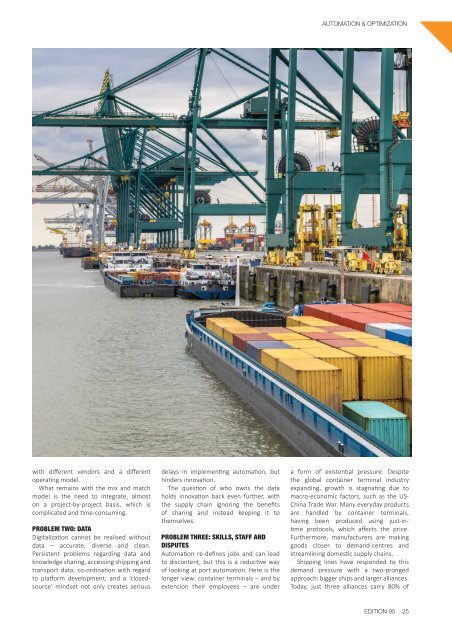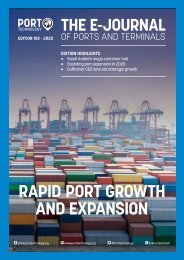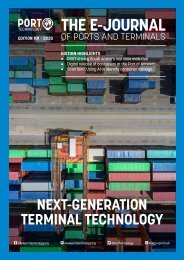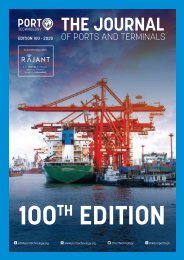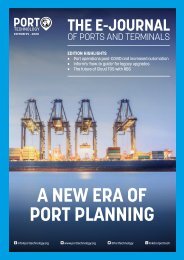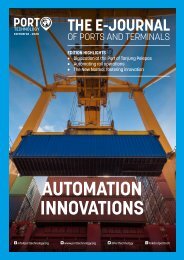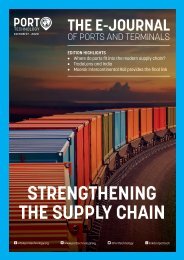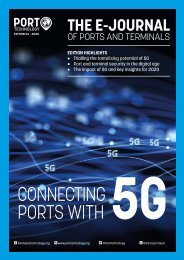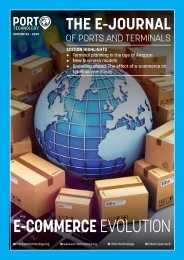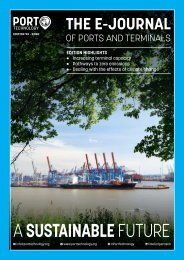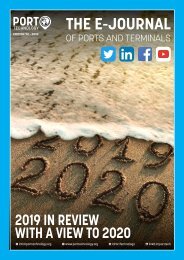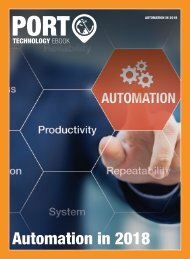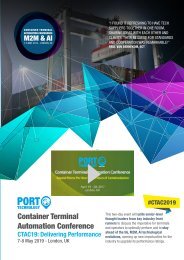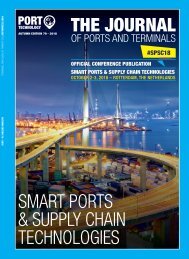Automation's Next Step
This edition of The Journal considers automation of container terminals and how the industry is delivering the next steps towards full and semi-automation. With the inclusion of over 30 technical papers The Journal also explores terminal planning in the age of automation, environmental sustainability for ports, the impact of mega ships and other topics. Automation continues to drive innovation across several industries, and there is no greater example of this than maritime. However, implementation, technology and best practices continue to be a constant source of debate and analysis across the sector, as is shown in this edition of the PTI Journal. The automation debate is not new, but it remains a booming market and a source of growth for the wider container terminal industry. One thing is for certain, automation is here to stay.
This edition of The Journal considers automation of container terminals and how the industry is delivering the next steps towards full and semi-automation.
With the inclusion of over 30 technical papers The Journal also explores terminal planning in the age of automation, environmental sustainability for ports, the impact of mega ships and other topics.
Automation continues to drive innovation across several industries, and there is no greater example of this than maritime.
However, implementation, technology and best practices continue to be a constant source of debate and analysis across the sector, as is shown in this edition of the PTI Journal.
The automation debate is not new, but it remains a booming market and a source of growth for the wider container terminal industry.
One thing is for certain, automation is here to stay.
You also want an ePaper? Increase the reach of your titles
YUMPU automatically turns print PDFs into web optimized ePapers that Google loves.
AUTOMATION & OPTIMIZATION<br />
with different vendors and a different<br />
operating model.<br />
What remains with the mix and match<br />
model is the need to integrate, almost<br />
on a project-by-project basis, which is<br />
complicated and time-consuming.<br />
PROBLEM TWO: DATA<br />
Digitalization cannot be realised without<br />
data – accurate, diverse and clean.<br />
Persistent problems regarding data and<br />
knowledge sharing, accessing shipping and<br />
transport data, co-ordination with regard<br />
to platform development, and a ‘closedsource’<br />
mindset not only creates serious<br />
delays in implementing automation, but<br />
hinders innovation.<br />
The question of who owns the data<br />
holds innovation back even further, with<br />
the supply chain ignoring the benefits<br />
of sharing and instead keeping it to<br />
themselves.<br />
PROBLEM THREE: SKILLS, STAFF AND<br />
DISPUTES<br />
Automation re-defines jobs and can lead<br />
to discontent, but this is a reductive way<br />
of looking at port automation. Here is the<br />
longer view: container terminals – and by<br />
extension their employees – are under<br />
a form of existential pressure. Despite<br />
the global container terminal industry<br />
expanding, growth is stagnating due to<br />
macro-economic factors, such as the US-<br />
China Trade War. Many everyday products<br />
are handled by container terminals,<br />
having been produced using just-intime<br />
protocols, which affects the price.<br />
Furthermore, manufacturers are making<br />
goods closer to demand-centres and<br />
streamlining domestic supply chains.<br />
Shipping lines have responded to this<br />
demand pressure with a two-pronged<br />
approach: bigger ships and larger alliances.<br />
Today, just three alliances carry 80% of<br />
EDITION 95 25


